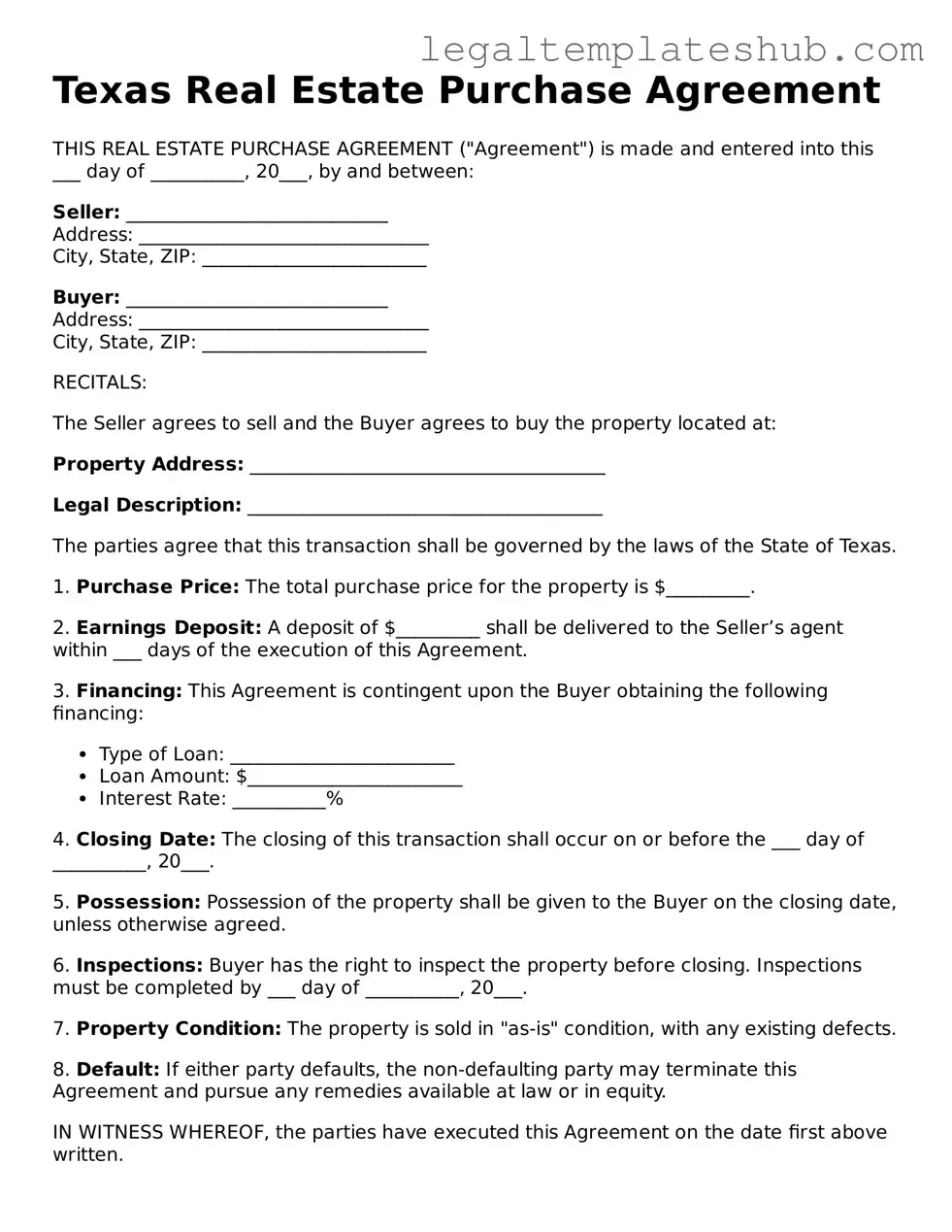Instructions on Filling in Texas Real Estate Purchase Agreement
Once you have the Texas Real Estate Purchase Agreement form, you can begin filling it out. This document will require specific information about the property, the buyer, and the seller. Ensure you have all necessary details at hand before starting to complete the form.
- Identify the Parties: At the top of the form, enter the names and contact information of the buyer(s) and seller(s). Make sure to include full legal names.
- Property Description: Provide a detailed description of the property being sold. This includes the address, lot number, and any other relevant identifiers.
- Purchase Price: Clearly state the total purchase price of the property. This should reflect the agreed amount between the buyer and seller.
- Earnest Money: Indicate the amount of earnest money the buyer will deposit. Specify where this money will be held, such as with a title company or real estate broker.
- Closing Date: Enter the proposed closing date for the transaction. This is when the ownership will officially transfer from the seller to the buyer.
- Contingencies: List any contingencies that must be met for the sale to proceed. Common contingencies include financing, inspections, or the sale of the buyer’s current home.
- Additional Terms: Include any additional terms or conditions agreed upon by both parties. This could cover repairs, appliances included, or other specifics.
- Signatures: Finally, both the buyer and seller must sign and date the agreement. Ensure that all signatures are in the appropriate places to validate the document.
After completing the form, review it carefully to ensure all information is accurate. Both parties should keep a copy for their records. Next steps will involve the buyer and seller fulfilling any contingencies and preparing for the closing process.
